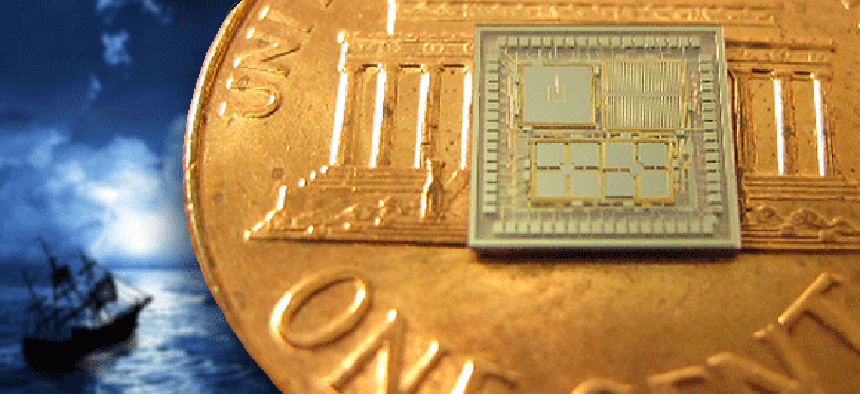Tiny chip provides precise GPS navigation without the GPS

DARPA has developed a prototype chip smaller than a dime that could provide precise navigation when GPS signals are jammed or otherwise unavailable.
The Global Positioning System has long been an invaluable tool for the military, as well as anyone else looking to get from Point A to Point B. But sometimes GPS signals aren’t available, whether because of structural interference, a system glitch or intentional jamming.
So in 2010, the Defense Advanced Research Projects Agency set out to develop a “timing and inertial measurement unit” (TIMU) made of microscale components that could deliver precise location and navigation without GPS. DARPA and researchers at the University of Michigan built a prototype chip, about one-third the width of a penny and six human hairs thick, that does the job.
The TIMU, DARPA recently announced, performs the three functions necessary for navigation, simultaneously measuring orientation, acceleration and time.
The chip has a six-axis inertial measurement unit made of three gyroscopes and three accelerometers, along with a master clock, DARPA said. It’s built from groundbreaking designs from DARPA’s Micro-Technology for Positioning, Navigation and Timing (Micro-PNT) program, launched in January 2010 with the goal of developing microscale clocks and inertial sensors.
Six microfabricated layers make up the TIMU, each one 50 microns thick (the thickness of a human hair) and each performing a different function, DARPA said. Altogether, the whole package takes up 10 cubic millimeters.
“Both the structural layer of the sensors and the integrated package are made of silica,” Andrei Shkel, DARPA program manager, said in the agency’s announcement. “The hardness and the high-performance material properties of silica make it the material of choice for integrating all of these devices into a miniature package. The resulting TIMU is small enough and should be robust enough for applications (when GPS is unavailable or limited for a short period of time) such as personnel tracking, handheld navigation, small diameter munitions and small airborne platforms.”
Non-GPS navigation tools, of course, have been around at least since the early days of seafaring vessels. But even modern versions of the tools can be costly and cumbersome. DARPA has noted that a gyroscope used as an inertial sensor for a precision missile can cost up to $1 million and take a month to assemble by hand. The Micro-PNT program set out to scale down the process, by, among other things, developing 3D microfabrication methods.
Among the methods researchers developed were microscale processes for glass blowing, quartz blowing and atomic layering of diamond in creating sensors that work like a Foucault pendulum, DARPA said.
The idea isn’t to replace GPS, but to have an alternative in case the signal goes out. And, as with much of its research over the years, DARPA’s work in this area could have an impact outside the military — possibly, for example, helping with indoor location methods for 911 calls.
NEXT STORY: A checklist for keeping mobile apps secure





